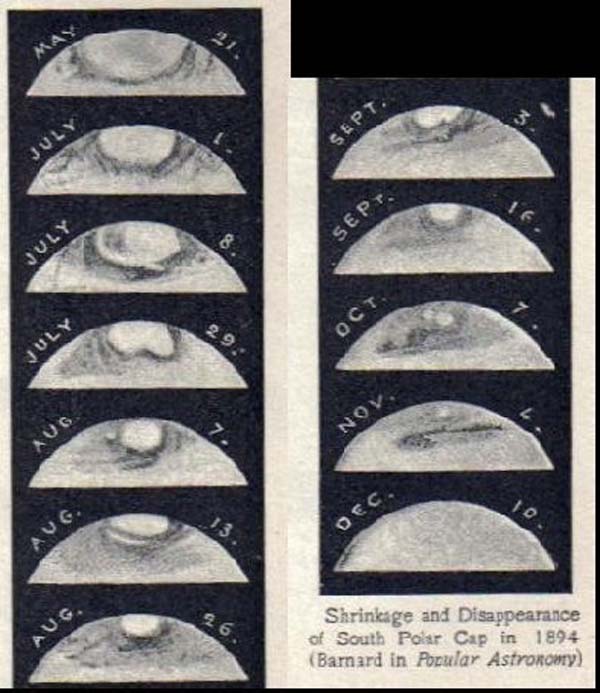
“Imagination is as vital to any advance in science as learning and precision are
essential for starting points.”
-Percival Lowell
Percival Lowell (1855-1916) was fairly new to astronomy in 1894. After leaving the
family business in Boston and traveling and working in Asia, he spent the last 23
years of his life in astronomy. The observatory on “Mars Hill” in Flagstaff,
Arizona was ready in 1894 for the great Mars opposition that year thanks to the
assistance of William Pickering and Andrew Douglass. Quickly erected mountings and
housings for two loaner refractors (12 inch and 18 inch) were in place for this
event in 1894. The sketches by Lowell above are centered on the Hesperia region in
all three drawings and are separate by about 3 month intervals in time. The first
drawing shows the large south polar cap and was made June 7, 1894 note the gibbous
phase here 5 months before opposition.

“It is quite possible we may have formed entirely erroneous ideas of what we
actually see. The greenish gray patches may not be seas at all, or the ruddy
continents, solid land. Neither may the obscuring patches be clouds of vapor. “
-Edward E. Barnard
At the same time nearly 1000 miles away at Mount Hamilton’s (Lick Observatory)
eagle eyed Edward Emerson Barnard (1857-1923) was observing and sketching Mars
during his last year at Lick Observatory before taking a position at the
University of Chicago and Yerkes Observatory (Williams Bay, Wisconsin). Most of
his observing time was spent using the 36 inch Clark refractor but other scopes on
the mountain were used when telescope time on the large refractor was not
available. Barnard never saw the “canals” described and drawn by Schiaparelli and
Lowell. This sequence of drawings by Barnard shows the shrinkage of the south
polar cap from May to December 1894.
The Drawings are from: David P. Todd’s, A New Astronomy © 1897, American Book Company
Frank McCabe
